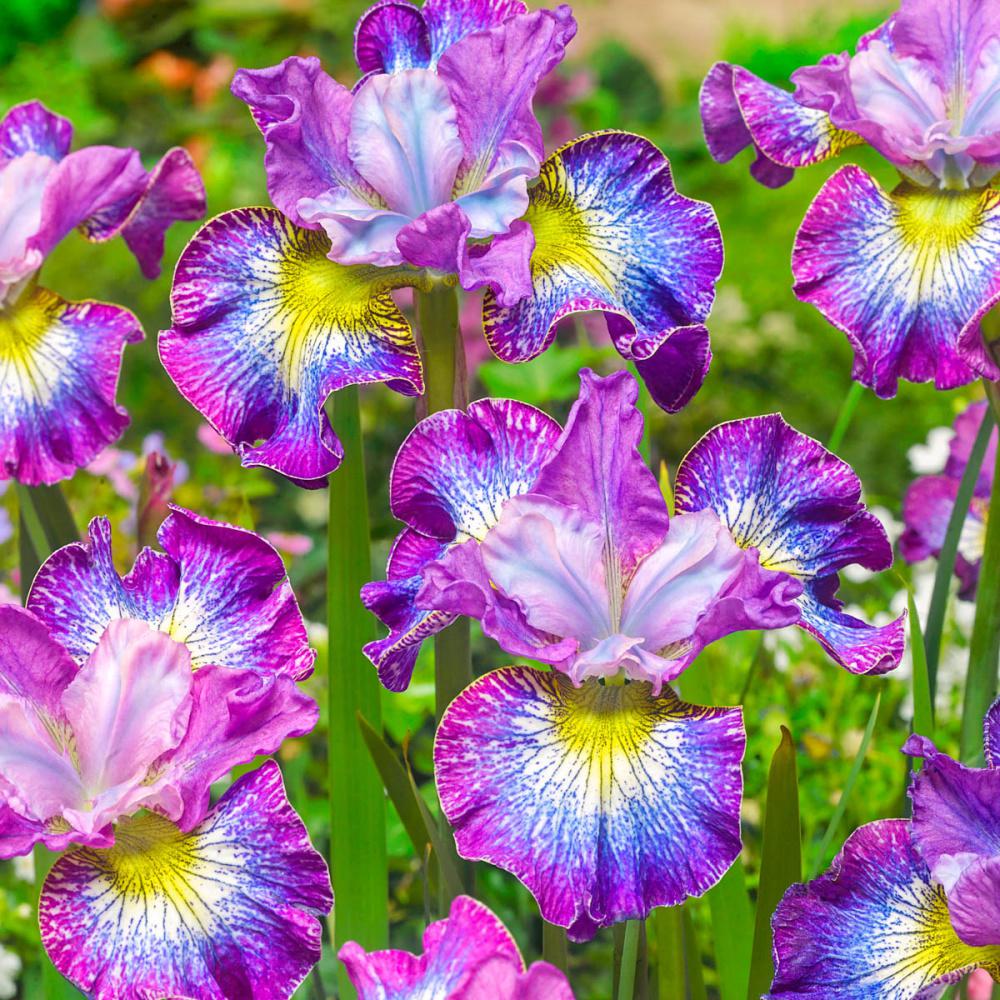

Once the flowers are gone, the foliage of this group remains as decorative as almost any ornamental grass. In colder regions, transplanting iris occurs in early spring, with late August offering a second option. The flowers are smaller than the blooms from the siberian iris variety. For Siberian iris, the right time for transplanting depends on where you garden. Red-violet with lighter standards and styles, gold signal Also known as blue moon iris, Siberian irises are clump-forming, with grass-like foliage and blooms rising from thin stems. Iris sibirica Blue Moon (Siberian Iris) is a clump-forming perennial with bright violet-blue blossoms adorned with deep purple veins and delicate pale yellow. Medium blue with red-violet tones that sets a second bloom 2-3 weeks after the first when grown well Standard off-white, Fall apricot ground red overlay Standard butter yellow, fall bright daffodil yellowĪ delicate-looking flower of pansy purple in color Very ruffled creamy-white with a smooth gold throat blooms late in the season Siberian iris is an adaptable plant which tolerates a wide range of soils, including boggy ones, but will generally perform well in average garden soils. Standard ruffled deep violet, fall ruffled darker violet with blue undertones. Ruffled dark grey-blue with a violet wash, upright styles are much lighter and showyįall bright blue with lighter styles and standards, crisp gold signal Light orchid with turquoise styles and gold signalsįull multiple falls of rich violet, great flower form Multiple color layers blend into warm butterscotch This is not guaranteed, however with the right culture and weather temperatures it can be a wonderful bonus to your garden.īi-tone rich blue-violet, very ruffled Tet. The delicate grass-like leaves make a nice contrast to other foliage in the garden. Some iris will send a second flush of Repeat bloom (RE) a few weeks after the initial flush. Siberian Iris is a wonderful herbaceous perennial which adds a great design element to any garden. Propagation Lift and divide clumps, or separate bulb offsets, and plant immediately in early autumn. Help to extend your bloom in the garden select Early, Mid-Season, and Late varieties. In beds, Siberian iris requires a few extra waterings in a season. Some iris bloom before others and others later. Flower petals are purple with white and yellow markings. Peak bloom season for Siberian Irises at Mt Pleasant Iris Farm is the last two weeks of May. Height: 1.2m Spread: 30cm Hardy Attractive to wildlife Flower colour: Foliage colour: Position Soil Siberian flag iris, Iris sibirica, produces small, delicate flowers and narrow, bright green foliage. Siberians will look their best after two to three years after transplanting. Tetraploid (tet.) plants generally have stockier-looking flowers, foliage, and stems than diploids (dip.). These are hybrids from species native to central Eurasia they are very strong, hardy, and adaptable in the perennial bed.


Siberian irises have graceful flowers on a grass-like foliage plant.


 0 kommentar(er)
0 kommentar(er)
